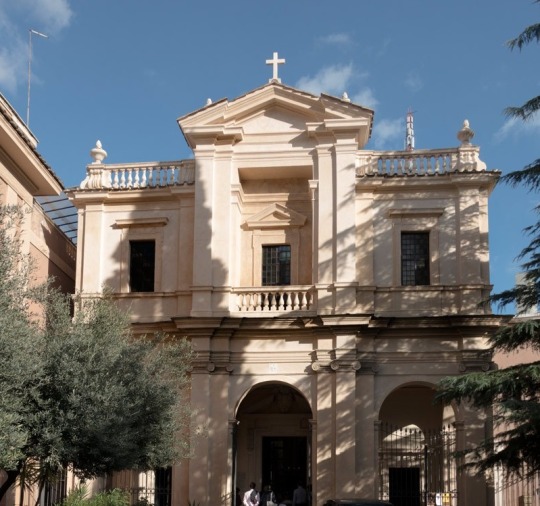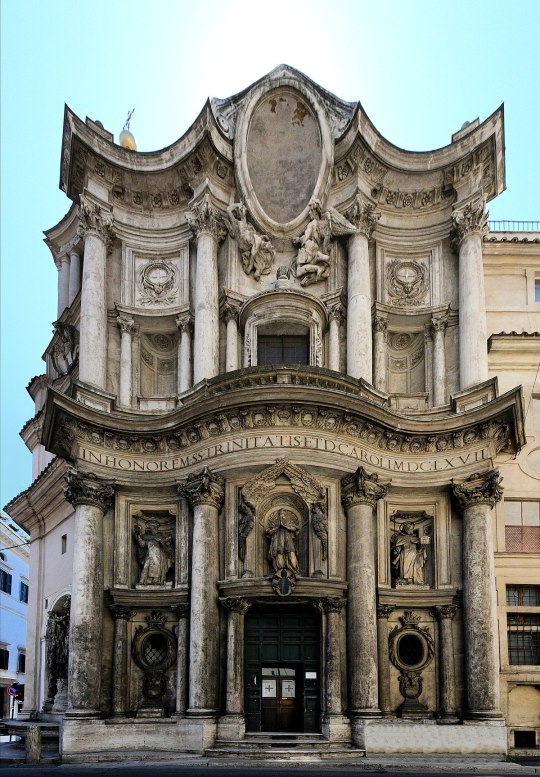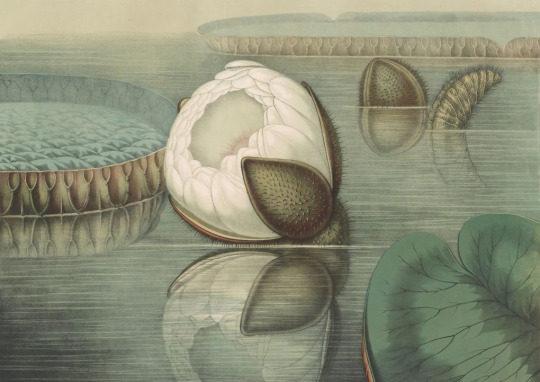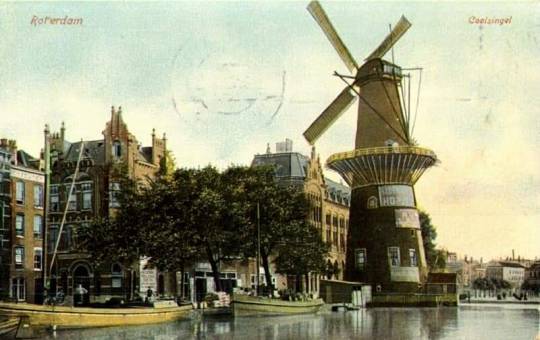#Victoria Regia
Text

Woman playing violin, standing on lily pad at Shaw's Garden (Missouri Botanical Garden), in front of Linnean House. Photograph by William G. Swekosky, ca. 1905. (Detail)
view more on wordPress

Woman playing violin, standing on lily pad at Shaw's Garden (Missouri Botanical Garden), in front of Linnean House. Photograph by William G. Swekosky, ca. 1905. | Missouri History Museum
#botanical garden#giant leaf#violinist#giant lily pad#victorian era#botanicals#victoria regia#early 1900s#Missouri botanical garden#musician#vintage photography#botanical#amazonian water lily#vintage photos#vintage photo#1900s#vernacular photo#vintage photograph#photographie vintage#vintage fotografie#fotografia vintage#William G. Swekosky#William Swekosky
306 notes
·
View notes
Text
I Maneskin li ho visti con meno emozione del solito, sarà che sono abituati a palchi molto più grandi
#e tbh non mi piace il modo in cui la regia indugia su victoria#lo facesse su tutti ok ma solo su di lei....#sanremo 2023
6 notes
·
View notes
Photo

🌼 Victoria regia, or, The great water lily of America: . Boston: Printed and pub. for the author, by Dutton and Wentworth, 1854.
22 notes
·
View notes
Text
La Roma de Bernini y Borromini
La Roma del siglo XVII fue un período de gran florecimiento artístico y arquitectónico, y tanto Borromini como Bernini fueron figuras importantes en la creación de la arquitectura barroca en la ciudad. Sus obras son consideradas como algunas de las más impresionantes y bellas de la época.
Borromini es conocido por su estilo arquitectónico distintivo, que se caracteriza por el uso de formas curvas y la manipulación de la luz y la sombra para crear efectos dramáticos. Entre sus obras más famosas se encuentran la iglesia de San Carlo alle Quattro Fontane y la iglesia de Sant'Ivo alla Sapienza.
Por su parte, Bernini es reconocido por sus esculturas y monumentos, así como por sus trabajos arquitectónicos, como la Piazza Navona y la iglesia de Sant'Andrea al Quirinale. También es conocido por su trabajo en la Basílica de San Pedro, donde diseñó la famosa plaza y la famosa baldachin sobre el altar mayor.
En general, la obra de Borromini y Bernini representa una fusión única de la arquitectura, la escultura y el diseño urbano, y su legado continúa siendo una fuente de inspiración para arquitectos y artistas en todo el mundo.
Algunas de las obras de ellos fueron:
Chiesa di Santa Bibiana:

Iglesia de San Carlo alle Quattro Fontane:

Oratorio dei Filippini:

Sant'ivo Alla Sapienza:

Iglesia de Santa María de la Victoria:

Galería Spada:

Iglesia de San Andrés del Quirinal:

Regia:

Basílica de San Pedro:

A continuación se presenta una ficha del mapa con una ubicación de las obras más destacadas:
@lonuevodenuevo
10 notes
·
View notes
Text
William Sharp’s Chromolithographs of The Great Water Lily (1854):

Plant at Three Weeks of Growth

Underside of Leaf

Opening Bud

Opening Flower

Complete Bloom

Intermediate Stages of Bloom
These six magnificent colour lithographs are to be found in Victoria Regia, or, The Great Water Lily of America: With a Brief Account of its Discovery and Introduction into Cultivation (1854), a work by amateur botanist John Fisk Allen which documents his attempts to propagate the Amazon's Victoria regia (now called Victoria amazonica) in the more northerly climes of his hometown of Salem, Massachusetts. The wonderfully lavish plates accompanying the slim volume are the work of the British-born printer William Sharp, who is credited with creating the very first chromolithograph on American soil...
source
3 notes
·
View notes
Photo

Miss Supranational Brazil 2022 National Costume
The Victoria Regia and The Butterfly (fauna and flora of Brazil)
Giovanna is passionate about nature and develops a social project aimed at protecting rivers. The costume has butterflies, which represent transformation and freedom.
The victoria regia, also present in the costume, is one of the largest aquatic plants in the world and has an enormous floating capacity.
Caption via Instagram
#miss supranational 2022#miss supranational brazil#why so heavy on the photoshop#fr you can't even see the costume#side note i went through her instagram and her hair is perfection#national costume contest
18 notes
·
View notes
Photo

🔸 1895: Angie Means stands on a giant Amazonian water lily pad, Victoria regia, in the Phipps Conservatory’s Victoria room, Pittsburgh, USA #victorianchaps #oldphoto #victorian #nostalgia #waterlilies #conservatory #retro #goodolddays #vintage #1890s #pastlives #history #pittsburgh (at Phipps Conservatory and Botanical Gardens) https://www.instagram.com/p/CdIZm56D9nK/?igshid=NGJjMDIxMWI=
#victorianchaps#oldphoto#victorian#nostalgia#waterlilies#conservatory#retro#goodolddays#vintage#1890s#pastlives#history#pittsburgh
29 notes
·
View notes
Text
I'm obsessed with the ekphrasis in this passage primarily because Minerva has a simple olive-leaf border surrounding one (1) scene showing a contest between herself and Neptune, with the Olympians, seeming noble and awesome, overlooking them, and victory crowing her the winner; then four "scenelets" (I find it difficult to discern if she is just depicting the mountains, the two birds, and Cinyras on the temple steps, or the actual action of their transformation/the preceding/following events), depicting the gods as beings not to be trifled with. The passage also includes her reasoning behind including the extra scenes. She is certainly not subtle in making her point...I also love that the topic she chose for her weaving was....her winning another contest, surrounded by the gods defeating lesser beings in...contests. Minerva certainly is the goddess of strategy, not subtly. (and maybe also the goddess of insecurity...who needs to hype themselves up so much to win a contest against a lesser being that they first surprise their quarry, then choose to show themselves as a winner in a past contest...that's like playing a football match with your old season tournament trophy on the sideline...like, why do you need that?)
But Arachne has 22 (!) separate scenes and an elaborate vegetative border. While Minerva depicts the gods with "their own features" (this seems almost rote, like she's working from an existing stylistic template), Arachne's weaving is so accurate that her figures are described as "real"/"true". Her sheer volume of figures simply overtowers Minerva's one piddly scene, as does their message of "the gods are capricious and cruel, even to their own kind". The gods are not stately and awesome in Arachne's tapestry: they are monstrous, terrible beings who contort their forms to take advantage of those who they can, even those who undoubtedly hold as much divine power as they do, as the case is for Neptune's rape of Ceres in lines 118-119. And Ovid doesn't even include her reasoning for creating these scenes, so I have to assume the reasoning is "if these gods are flawed, than Minerva can be, too." I admire her audacity in the face of likely loss and death. I think she knew she was going out, so she chose to go out swinging, and I think that's pretty badass.
I love how Ovid depicts the gods as fallacious and capricious in the Metamorphoses. What does that mean? It is a barometer of public opinion about the gods? Is it just his own opinion or stylization of existing literary traditions and tropes? Is it meant to be a slight to the Imperial family and the Roman state in general (i.e. those in charge are cruel, petty, and unjust)? I'm obsessed. I'm completely obsessed.
Cecropia Pallas scopulum Mavortis in arce 70
pingit et antiquam de terrae nomine litem.
bis sex caelestes medio Iove sedibus altis
augusta gravitate sedent; sua quemque deorum
inscribit facies: Iovis est regalis imago;
stare deum pelagi longoque ferire tridente 75
aspera saxa facit, medioque e vulnere saxi
exsiluisse fretum, quo pignore vindicet urbem;
at sibi dat clipeum, dat acutae cuspidis hastam,
dat galeam capiti, defenditur aegide pectus,
percussamque sua simulat de cuspide terram 80
edere cum bacis fetum canentis olivae;
mirarique deos: operis Victoria finis.
ut tamen exemplis intellegat aemula laudis,
quod pretium speret pro tam furialibus ausis
quattuor in partes certamina quattuor addit, 85
clara colore suo, brevibus distincta sigillis:
Threiciam Rhodopen habet angulus unus et Haemum,
nunc gelidos montes, mortalia corpora quondam,
nomina summorum sibi qui tribuere deorum;
altera Pygmaeae fatum miserabile matris 90
pars habet: hanc Iuno victam certamine iussit
esse gruem populisque suis indicere bellum;
pinxit et Antigonen, ausam contendere quondam
cum magni consorte Iovis, quam regia Iuno
in volucrem vertit, nec profuit Ilion illi 95
Laomedonve pater, sumptis quin candida pennis
ipsa sibi plaudat crepitante ciconia rostro;
qui superest solus, Cinyran habet angulus orbum;
isque gradus templi, natarum membra suarum,
amplectens saxoque iacens lacrimare videtur. 100
circuit extremas oleis pacalibus oras
(is modus est) operisque sua facit arbore finem.
Maeonis elusam designat imagine tauri
Europam: verum taurum, freta vera putares;
ipsa videbatur terras spectare relictas 105
et comites clamare suas tactumque vereri
adsilientis aquae timidasque reducere plantas.
fecit et Asterien aquila luctante teneri,
fecit olorinis Ledam recubare sub alis;
addidit, ut satyri celatus imagine pulchram 110
Iuppiter inplerit gemino Nycteida fetu,
Amphitryon fuerit, cum te, Tirynthia, cepit,
aureus ut Danaen, Asopida luserit ignis,
Mnemosynen pastor, varius Deoida serpens.
te quoque mutatum torvo, Neptune, iuvenco 115
virgine in Aeolia posuit; tu visus Enipeus
gignis Aloidas, aries Bisaltida fallis,
et te flava comas frugum mitissima mater
sensit equum, sensit volucrem crinita colubris
mater equi volucris, sensit delphina Melantho: 120
omnibus his faciemque suam faciemque locorum
reddidit. est illic agrestis imagine Phoebus,
utque modo accipitris pennas, modo terga leonis
gesserit, ut pastor Macareida luserit Issen,
Liber ut Erigonen falsa deceperit uva, 125
ut Saturnus equo geminum Chirona crearit.
ultima pars telae, tenui circumdata limbo,
nexilibus flores hederis habet intertextos.
Ovid, Metamorphoses VI.70-128
Pallas pictures the hill of Mars on the citadel of Cecrops and that old dispute over the naming of the land. (There sit twelve heavenly gods on lofty thrones in awful majesty, Jove in their midst; each god she pictures with his own familiar features; Jove's is a royal figure.) (There stands the god of ocean, and with his long trident smites the rugged cliff, and from the cleft rock sea-water leaps forth; a token to claim the city for his own.) (To herself the goddess gives a shield and a sharp-pointed spear, and a helmet for her head; the aegis guards her breast; and from the earth smitten by her spear's point upsprings a pale-green olive-tree hanging thick with fruit); (and the gods look on in wonder). (Victory crowns her work.) Then, that her rival may know by pictured warnings what reward she may expect for her mad darings she weaves in the four corners of the web four scenes of contest, each clear with its own colours and in miniature design. (One corner shows Thracian Rhodepe and Haemus, now huge, bleak mountains, but once audacious mortals who dared assume the names of the most high gods.) (A second corner shows the wretched fate of the Pygmaean queen, whom Juno conquered in a strife, then changed into a crane, and bade her war upon those whom once she ruled.) (Again she pictures how Antigone once dared to set herself against the consort of mighty Jove, and how Queen Juno changed her into a bird; Ilium availed her nothing, nor Laomedon, her father; nay, she is clothed in white feathers, and claps her rattling bill, a stork.) (The remaining corner shows Cinyras bereft of his daughters; there, embracing the marble temple-steps, once their limbs, he lies on the stone, and seems to weep.) (The goddess then wove around her work a border of peaceful olive-wreath.) This was the end; and so, with her own tree, her task was done. (transl. Miller 1915)
(Arachne pictures Europa cheated by the disguise of the bull: a real bull and real waves you would think them. The maid seems to be looking back upon the land she has left, calling on her companions, and, fearful of the touch of the leaping waves, to be drawing back her timid feet.) (She wrought Asterie, held by the struggling eagle); (she wrought Leda, beneath the swan’s wings.) (She added how, in a satyr's image hidden, Jove filled lovely Antiope with twin offspring); (how he was Amphitryon when he cheated thee, Alcmena); (how in a golden shower he tricked Danae); (Aegina, as a flame); (Mnemosyne, as a shepherd); (Deo's daughter, as a spotted snake). (Thee also, Neptune, she pictured, changed to a grim bull with the Aeolian maiden); (now as Enipeus thou dost beget the Aloidae), (as a ram deceivedst Bisaltis). (The golden-haired mother of corn, most gentle, knew thee as a horse); (the snake-haired mother of the winged horse knew thee as a winged bird); (Melantho knew thee as a dolphin). (To all these Arachne gave their own shapes and appropriate surroundings.) (Here is Phoebus like a countryman); (and she shows how he wore now a hawk's feathers), (now a lion's skin); (how as a shepherd he tricked Macareus' daughter, Isse); (how Bacchus deceived Erigone with the false bunch of grapes); (how Saturn in a horse's shape begot the centaur, Chiron). (The edge of the web with its narrow border is filled with flowers and clinging ivy intertwined.) (transl. Miller 1915)
#m mutters#minerva#athena#arachne#ovid#metamorphoses#long post whoops (but most of it is latin and translation..)#haha there were so many spelling mistakes....#ok to reblog btw
15 notes
·
View notes
Text




The Victoria house at Oslo botanical garden, built in 1876 to grow specimens of the flower Victoria Amazonica, sometimes known as Victoria Regia
2 notes
·
View notes
Photo

"Homme Montrant le Dessous d'une Feuille de Victoria Regia" anonyme (circa 1930) et maquette du "Crystal Palace" de Richard Armiger d'après Joseph Paxton (1803-1865) à l'exposition “Végétal” orchestrée par Chaumet à l'Ecole des Beaux-Arts de Paris, juin 2022.
2 notes
·
View notes
Note
Hey psst yey hey hey psst...
May i recommend looking into the Vitória Regia/ queen victorias water lilly myth bc i personally think its v cool and i like it and it holds a speciql place in my heart since i learned abt it not by like learnig but by bejng told it yk classic oral tradition
ooh I'll check it out, thanks anon for the recommendation!
1 note
·
View note
Text
Events 3.29 (before 1960)
1430 – The Ottoman Empire under Murad II captures Thessalonica from the Republic of Venice.
1461 – Battle of Towton: Edward of York defeats Queen Margaret to become King Edward IV of England, bringing a temporary stop to the Wars of the Roses.
1549 – The city of Salvador, Bahia, the first capital of Brazil, is founded.
1632 – Treaty of Saint-Germain is signed returning Quebec to French control after the English had seized it in 1629.
1792 – King Gustav III of Sweden dies after being shot in the back at a midnight masquerade ball at Stockholm's Royal Opera 13 days earlier.
1806 – Construction is authorized of the Great National Pike, better known as the Cumberland Road, becoming the first United States federal highway.
1809 – King Gustav IV Adolf of Sweden abdicates after a coup d'état.
1809 – At the Diet of Porvoo, Finland's four Estates pledge allegiance to Alexander I of Russia, commencing the secession of the Grand Duchy of Finland from Sweden.
1847 – Mexican–American War: United States forces led by General Winfield Scott take Veracruz after a siege.
1849 – The United Kingdom annexes the Punjab.
1857 – Sepoy Mangal Pandey of the 34th Regiment, Bengal Native Infantry mutinies against the East India Company's rule in India and inspires the protracted Indian Rebellion of 1857, also known as the Sepoy Mutiny.
1867 – Queen Victoria gives Royal Assent to the British North America Act which establishes Canada on July 1.
1871 – Royal Albert Hall is opened by Queen Victoria.
1879 – Anglo-Zulu War: Battle of Kambula: British forces defeat 20,000 Zulus.
1882 – The Knights of Columbus is established.
1927 – Sunbeam 1000hp breaks the land speed record at Daytona Beach, Florida.
1936 – The 1936 German parliamentary election and referendum seeks approval for the recent remilitarization of the Rhineland.
1941 – The North American Regional Broadcasting Agreement goes into effect at 03:00 local time.
1941 – World War II: British Royal Navy and Royal Australian Navy forces defeat those of the Italian Regia Marina off the Peloponnesian coast of Greece in the Battle of Cape Matapan.
1942 – The Bombing of Lübeck in World War II is the first major success for the RAF Bomber Command against Germany and a German city.
1947 – Malagasy Uprising against French colonial rule begins in Madagascar.
1951 – Julius and Ethel Rosenberg are convicted of conspiracy to commit espionage.
1951 – Hypnosis murders in Copenhagen.
1957 – The New York, Ontario and Western Railway makes its final run, the first major U.S. railroad to be abandoned in its entirety.
0 notes
Text
Ruby Hamad

Ruby Hamad femminista, accademica e giornalista, racconta forme insidiose di discriminazione e altre manifestazioni quotidiane di razzismo interiorizzato.
È l’autrice di How White Women use Strategic Tears to Silence Women of Colour, nato dall’omonimo articolo del 2018, pubblicato per The Guardian Australia, che in italiano è stato tradotto col titolo Lacrime bianche / ferite scure. Femminismo e supremazia bianca. Un punto di riferimento globale per le discussioni su femminismo bianco e razzismo.
Nata in Libano e cresciuta a Sidney, in Australia, ha studiato sceneggiatura e regia cinematografica al Victorian College of the Arts, si è laureata in economia politica presso l’Università di Sydney e conseguito un master in giornalismo e pratica dei media presso l’Università di Sydney. Insegna storia e scienze sociali presso l’Università di Western Sydney.
Ha scritto articoli su diverse importanti riviste internazionali e tenuto il discorso di apertura della Giornata internazionale della donna 2017 e Feminist Intersection – In Conversation (con Celeste Liddle) per il Queen Victoria Women’s Centre, e l’hosting di panel al Melbourne Writers Festival e al Newcastle Writers Festival.
Redattrice per la pubblicazione femminista progressista The Scavenger, ha prodotto una serie di saggi sul significato culturale e politico del cibo e creato una serie su persone affette da disturbi mentali che indaga il mito che ha contribuito a plasmare l’opinione pubblica sullo stigma della malattia mentale.
Il suo primo libro, How White Women use Strategic Tears to Silence Women of Colour, definito “Miglior libro del 2020” da Cosmopolitan, Harper’s Bazaar, Kirkus Reviews e Publishers Weekly, è una condanna bruciante e ad ampio raggio della ‘femminilità bianca strategica’ e della ‘svalutazione storica delle donne di colore’ nella cultura occidentale.
Attraverso testimonianze, un’accurata ricostruzione storica, la sua esperienza personale e il ricorso alla cultura pop del cinema e delle serie TV, ha scritto un aperto atto di accusa al femminismo bianco liberale incolpato di non voler fare i conti con il proprio passato coloniale in cui le donne hanno esercitato – seppur da subalterne rispetto agli uomini – un potere e un ruolo fondamentale nel fissare gli standard dell’umanità nel suo complesso, incarnati nell’uomo bianco, ma anche nelle donne bianche. Non guardare alla storia, significa continuare a esercitare e perpetuare quel potere e pensare al razzismo solo come a un comportamento individuale e non come a un elemento fondamentale della costruzione binaria della identità femminile in cui alle donne bianche è stata riservata la parte di “damigella in pericolo” mentre alle nere la parte selvaggia e in definitiva subumana.
Dalla schiavitù al linciaggio e all’allontanamento forzato di bambini indigeni, le donne bianche sono state complici degli uomini bianchi nel razzismo e nella violenza, con il pretesto di proteggere la femminilità bianca. L’autrice esamina come questa eredità di secoli di violenza razziale e colonialismo da parte dei bianchi si manifesti ancora oggi nella vita di donne nere, asiatiche, latine, indiane, musulmane, arabe e indigene di tutto il mondo.
C’è da specificare che quando parla di “donne bianche” e di “donne nere” i termini non sono descrittivi ma politici. Non differenzia per colore della pelle ma si riferisce a coloro che beneficiano della bianchezza intesa come privilegio razziale. Quando parla di nero o marrone intende coloro che ne sono escluse in vari gradi secondo un confine in continuo movimento e di volta in volta rideterminato dalla colonialità globale in cui la razza (intesa come imposizione sociale) è il criterio fondamentale per la distribuzione della popolazione mondiale secondo ranghi, luoghi e ruoli nella struttura sociale e del potere.
0 notes
Text
Santos del Potosí toma venganza y vence a Fuerza Regia de visita
Santos del Potosí toma venganza y vence a Fuerza Regia de visitaEn un emocionante partido que se fue hasta tiempo extra, los Santos del Potosí tomaron venganza luego de su eliminación en la Copa Value y vencieron a domicilio a Fuerza Regia con marcador de 87 a 79, un duelo que representó apenas la segunda derrota en casa de los regios y que le permite a la quinteta celestial llegar a 13 victorias…

View On WordPress
0 notes
Text
Rotterdam Van Alles Overzicht 865
Oudehaven met de Koningsbrug en rechts het Witte Huis aan de Geldersekade. Op de achtergrond de spoorbrug over de Nieuwe Maas. 1900

De Leuvehaven, uit het zuiden. Op de achtergrond de Zeevischmarkt, rechts de Terwenakker en de Scheepmakershaven. 1900

De Rotterdamse Schie met de Delftse Poort en de Schiebrug. 1900

Personeelsleden en waarschijnlijk de kinderen van de hortulanus poseren op de bladeren van de Victoria Regia die 1 keer in het jaar in de tropische plantenkas van de Rotterdamsche Diergaarde bloeit. 1900

De Delftsevaart uit het noorden gezien, links de stokvisbrug over het Stokvisverlaat, rechts het Haagseveer, op de achtergrond de toren van de Grote Kerk. 1900

De Delftse Poort aan het Delftsepoortplein, gezien in de richting van de Rotterdamse Schie, uit het zuiden. 1900

Gezicht op het Coolsingelziekenhuis, uit het noordoosten, rechts de Van Oldenbarneveltstraat. 1900

De Coolsingel met op de achtergrond molen De Hoop, tot het jaar 1911 was de naam De Roomolen en in 1920 werd de molen gesloopt, rechts het Erasmiaans Gymnasium en de Passage, uit het zuiden gezien. 1900

Coolsingel met korenmolen De Hoop gezien uit het noordwesten. 1900

0 notes
Text

Rezultatele Campaniei de atragere și fidelizare a utilizatorilor „Fii deștept! Ia un card inteligent! 2023
Biblioteca Municipală „B.P. Hasdeu”, împreună cu Direcția Generală Cultură și Patrimoniu Cultural și Direcția Generală Educație Tineret și Sport din cadrul Primăriei municipiului Chișinău a organizat Campania de atragere și fidelizare a utilizatorilor „Fii deștept! Ia un card inteligent”, care s-a desfășurat în perioada 08-30 septembrie a.c.
Campania a avut drept scop atragerea și fidelizarea utilizatorilor în spațiul plăcut al bibliotecii. Toți utilizatorii bibliotecii au obținut cardul de acces gratuit, având posibilitatea de a participa la serviciile și activitățile bibliotecii și de a beneficia de împrumutul de carte.
Un aport deosebit al Campaniei l-au constituit parteneriatele din domeniul educației: școli, licee, centre de cultură și tineret din municipiul Chișinău, implicându-se la promovarea cardului de acces pentru utilizatori, menționând beneficiile acestuia.
Campania „Fii deștept! Ia un card inteligent” a atras la BM „B.P. Hasdeu” 6 542 de utilizatori noi, (cu 1916 mai mulți utilizatori decât în 2022), care au primit cardul unic de acces la colecția și serviciile bibliotecii. În această perioadă, bibliotecarii au organizat 230 de vizite ghidate cu preșcolari, elevi, studenți din 94 de instituții de învățământ, în urma cărora au fost semnate peste 40 de acorduri de noi parteneriate, iar chișinăuienii au vizitat biblioteca de peste 70 000 ori.
În mediul online au răsunat mesaje audio și video de promovare, fiind implicați lideri și reprezentanți din diverse domenii ale culturii. Apreciem aportul celor 68 de ambasadori ai Campaniei „Fii deștept! Ia un card inteligent”, care s-au implicat în promovarea activității Bibliotecii Municipale „B.P. Hasdeu”. Au devenit ambasadori mai multe personalități marcante precum: Angela Cutasevici, viceprimar al Municipiului Chișinău, Daniela Munca-Aftenev, șef adjunct, Direcția Generală Educație, Tineret și Sport din municipiul Chișinău, Igor Gîrlea, director interimar la Întreprinderea Municipală „Regia Autosalubritate” din Chișinău, academicianul Mihai Cimpoi, Președintele Asociației Naționale a Oamenilor Creație de Creație din Republica Moldova, Virgiliu Mărgineanu, producător de film, Mihai Țărnă, regizor de teatru și film, Serghei Sulin, Maestru în Artă, președintele Asociației Pictorilor Ruși din Republica Moldova „M-ART”, Elena Levițcaia Pahomova, jurnalistă, regizor, scriitorii: Ianoș Țurcanu, Radmila Popovici, Leo Butnaru, Galina Furdui, Nicolae Rusu, Victoria Fonari, Ronin Terente, etc.
Ținem să menționăm și implicarea reprezentanților mass-mediei în promovarea Campaniei „Fii deștept! Ia un card inteligent”, care au realizat mai multe interviuri, articole și reportaje ce reflectă activitatea Bibliotecii Municipale „B.P. Hasdeu”. Aducem mulțumiri partenerilor noștri: TVR Moldova, Diez.md, Moldova 1, Radio Chișinău, Noi.md, Radio Moldova, YAM. NEWS.MD.
0 notes